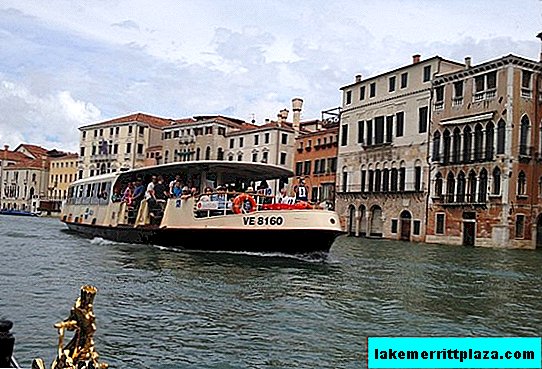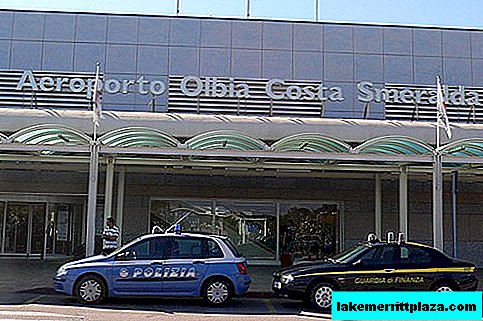Gorgonzola cheese (Gorgonzola) is an Italian relative of the famous French Roquefort. They are united not only by approximately equal age (they are considered the oldest cheeses with mold), but also by the romantic legends of their birth. Let's plunge into the majestic world of blue cheeses and get to know better with the noble Gorgonzola.
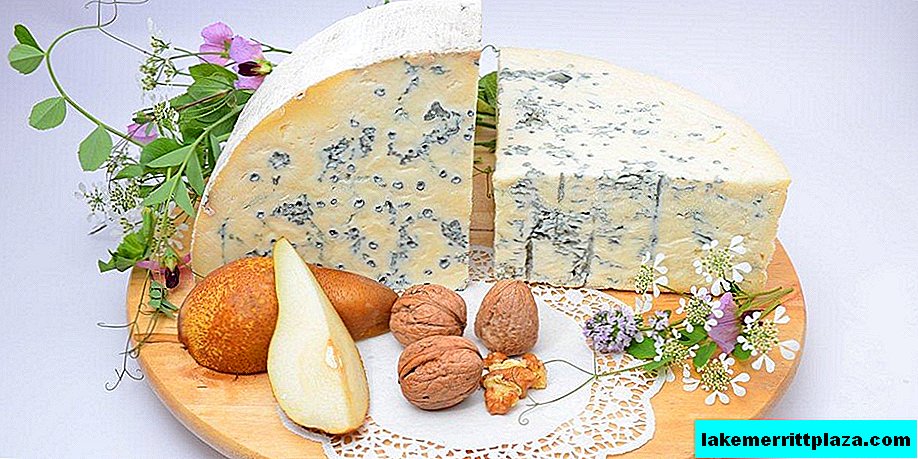
History and description of cheese
The date of birth of Gorgonzola is so far from our days that there are numerous disputes about the place and time of origin of cheese. In this regard, his story is entangled in many speculations.
According to some sources, Gorgonzola cheese was first obtained in 879 in the eponymous town near Milan (Milano). According to others, the cheese is home to the town of Valsassina, which for several centuries has been a famous cheese making place due to the presence of natural caves with an average air temperature of 6-12 degrees.
Legend has it that a young man in love left, without completing, his evening work on making cheese to spend time with his lady of the heart. In the morning, hoping to hide his oversight, he mixed the curd mass obtained in the evening with fresh milk. A few weeks later, a young man noticed blue veins on the finished cheese, and, having tried it, he realized that he had made a discovery.
Steven Jenkins, in his book Cheese Primer, suggests that the young man was preparing another Italian cheese, Stracchino, when he received the gorgonzola. In fact, the first name of a real Gorgonzola sounded like "strakkino from Gorgonzola", and later "starkkino green". And it was produced in the fall, when cows returned from mountain pastures.
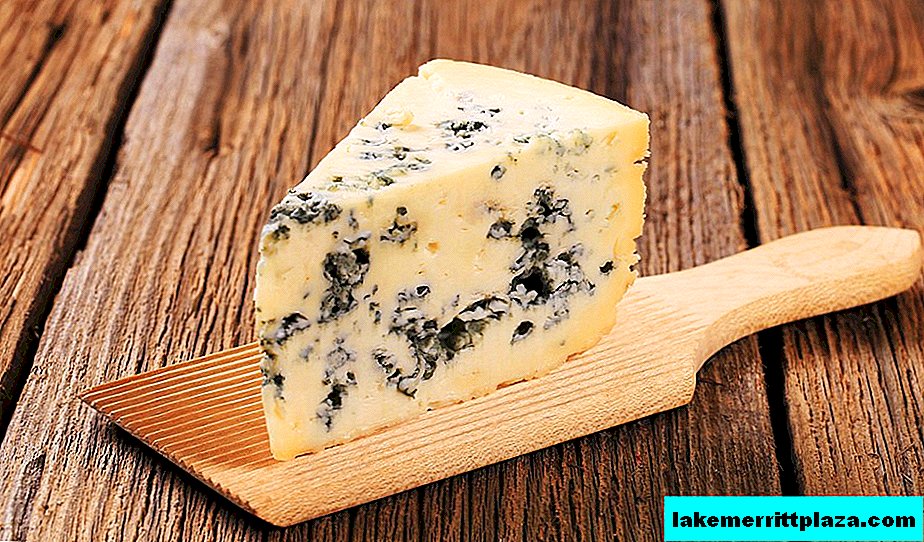
The spread of gorgonzola production began in two areas: Lombardia and Piemonte and was slower relative to other varieties. Initially, it was made in the cities of Pavia (Pavia) and Novara (Novara), later Como (Como) and Milan joined.
The beginning of the twentieth century is the starting point for the spread of gorgonzola. There are acts on the export of more than 10 thousand tons to Germany, Great Britain and France. At the same time, the British preferred a soft, slightly spicy white Gorgonzola, and the French and German residents ordered a tart double-cured cheese with many blue veins.
At the end of World War II, a formulation was developed for the production of gorgonzola by the "one curl" method. The new technique has become cheaper, more hygienic and better.
Dairy farms spread throughout the Po Valley. But in the 1970s, small factories were closed due to lack of financial resources. In 1955-1977, the regions eligible to produce Gorgonzole cheese were legally defined.
Currently, there are only 30 cheese factories producing the original gorgonzola. About 45% of cheese is made in Novara, 22% in Pavia, 15% in Milan.
Manufacturing technology
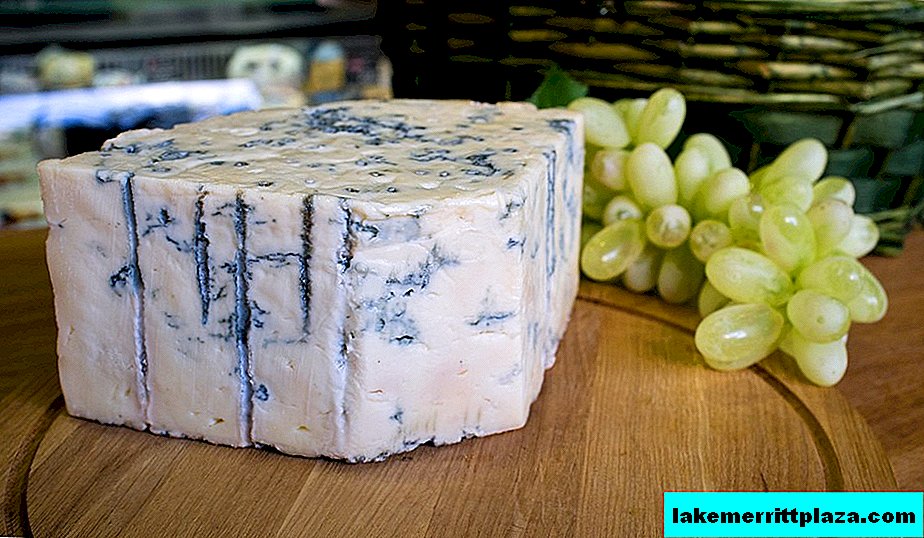
By law, this gorgonzola is produced in only two provinces of Italy: Lombardy (Bergamo, Brescia, Como, Cremona, Lecco, Lodi, Milan, Monza, Pavia, Varese) and Piedmont (Novara, Vercelli ( Vercelli), Cuneo (Cuneo), Verbania (Verbania), Verbano-Cusio-Ossola (Verbano-Cusio-Ossola), Casale Monferrato region (Casale Monferrato)). For its manufacture using milk obtained only in these regions.
Gorgonzola production is a modern automated process. Whole cow or goat milk is salted and cured by adding liquid rennet at a temperature of 28-36 degrees, while mold spores penicillium glaucum or penicillium roqueforti are introduced into the raw material. After that, the curd is placed in special tanks in the form of cylinders lined with natural fabric. Forms are periodically inverted to completely remove excess serum.
After removing the liquid, the heads of the cheese are rubbed with sea salt to form the final taste of the gorgonzola and sent to warm rooms with controlled humidity. After a week, check the taste and texture of the cheese. If everything matches the quality, then the cheese heads are pierced using special equipment to create air channels that promote the growth of fungal colonies. For further ripening, gorgonzola is sent to a cooler room, where mold begins to grow rapidly.
The maturation of soft gorgonzola lasts at least 50 days, spicy - from 4 months. A distinctive sign of genuine gorgonzola is the packaging foil marked with the letter "g".
How and what to eat

Gorgonzola is a straw-white soft cheese with greenish patches. It has a creamy soft taste with a specific characteristic aroma. Cheese is presented in two varieties:
- Gorgonzola Dolce - a young, soft, paste-like cheesepenetrated by veins of blue mold. The taste is sweet, soft with a delicate nutty note;
- Gorgonzola Piccante - a denser and more crumbly cheese with more mold streaks than soft cheese. The taste is spicy, deep with enhanced aroma.
Gorgonzola is a “living" product, the ripening of which never ends. Therefore, it is recommended to buy it in such an amount that it is possible to use in a few days. Pikante is stored for a longer time than Dolce.
Before use, you need at least 30 minutes to get cheese out of the refrigerator. During this time, he will acquire the necessary consistency and reveal all his taste.
Gorgonzola of both types is great for preparing both simple and complex recipes. Soft cheese creates a light aftertaste, piquant gives dishes a pronounced aroma of gorgonzola. Dolce cheese, due to its pasty consistency, is often used for sandwiches.
Risotto, polento and gorgonzola pasta are some of Italians' favorite foods. Cheese goes well with vegetables, fruits and nuts. Gorgonzola will be a great wine aperitif:
- Dolce emphasizes the aroma of soft and dessert fortified wines;
- Picante is suitable for dense, rich wines.
And, of course, sauces and soufflé with the addition of gorgonzola will be unsurpassed.
Gorgonzola sauce recipe
We bring to your attention a simple recipe for an original, delicious sauce with Italian cheese.
Melt 3 tablespoons of butter, add 60 g of gorgonzole cheese, finely chopped green onions, grated clove of garlic and a pinch of black pepper. Serve with meat. Minimum components, maximum taste!
Calorie content, chemical composition and beneficial properties
Gorgonzola is a cheese made without additives or preservatives. Thanks to the strictly controlled production and pasteurization of milk, the safety of cheese and the preservation of its taste are guaranteed.
The nutritional value of 100 g of cheese is 314 kcal, which contains:
- Carbohydrates about g;
- Proteins 18 g;
- Fats 27 g;
- Salt 1.6 g;
- Calcium 530 mg;
- Phosphorus 280 mg.

- Gorgonzola is an excellent food for athletes. During cheese making and ripening, milk proteins break down to free amino acids, which are easily absorbed and used by the body to synthesize its proteins.
- Peptides discovered by scientists in the gorgonzola are an antithrombotic factor, regulate the work of the gastrointestinal tract, perform an immunostimulating function, normalize blood pressure.
- Calcium, which is part of the cheese, has a high bioavailability, that is, it is quickly absorbed by the body. Which is very important for children during the period of intensive growth, as well as for the elderly to prevent the development of osteoporosis.
- During the preparation of cheese, lactic acid bacteria digest lactose. Therefore, properly aged gorgonzola contains only traces of this substance. Concerning, cheese is well tolerated by people who have problems digesting lactose.
- Due to the pasty consistency, it is believed that gorgonzole is a product with high fat content. This is completely wrong. A comparison of the values shows that the level of fat in Gorgonzole is absolutely comparable with the indicators of other cheeses, which are perceived by consumers as lighter.
- The presence of colonies of mold microorganisms leads to the formation of free fatty acids such as lauric, palmitic, stearic, oleic. They play an important role in the suppression of pathogenic microorganisms and help to increase the shelf life of cheese.
Of course, gorgonzola is not a medicine, but this Italian cheese will certainly fit perfectly into a balanced, healthy diet.
Price for 1 kg of gorgonzola in Italy and in Russia
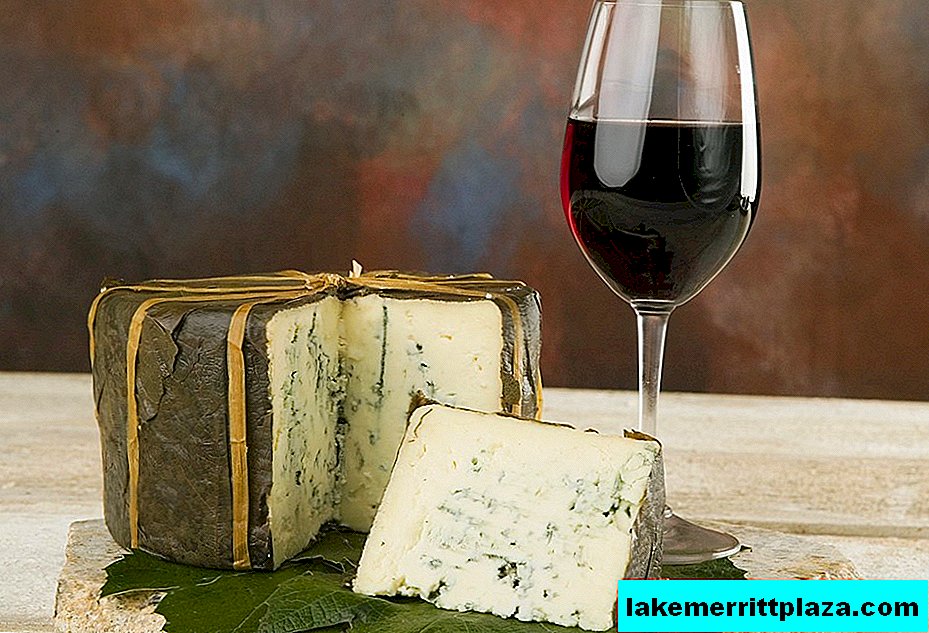
Currently, the total production of original cheese is over 48,000 tons per year. Retail turnover exceeds 500 million euros.
Since cheese has a limited shelf life, it goes on sale mainly in small packaging.
In Italy, on average, this cheese can be bought in the range from 6 to 9 Euros per 250 g (24-36 Euros per 1 kg). Now you can’t officially buy Gorgonzola on the shelves of domestic stores, but Internet sites in Moscow actively distribute genuine (as indicated by the seller) gorgonzola worth 350-500 rubles per 100 g (3500-5000 rubles per kg).
Acquaintance with the gorgonzola came to an end. Resting in Italy, do not pass by the moldy blue blood cheese. And let mold in life be only on cheese and only noble!


